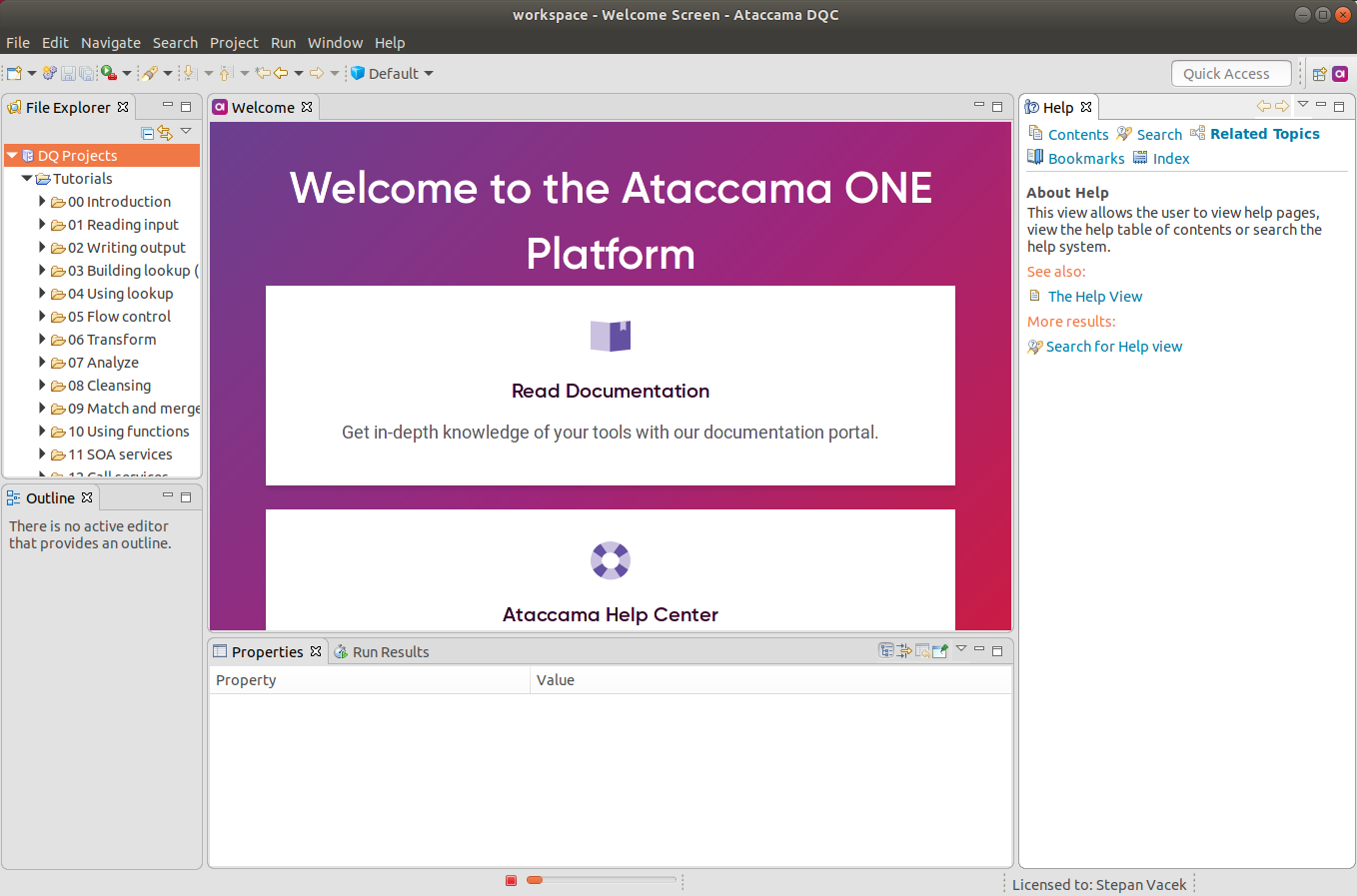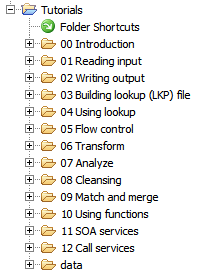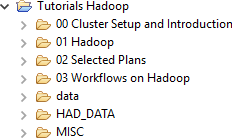ONE Desktop Tutorials
To get you started quickly and efficiently, ONE Desktop comes with a number of tutorials packaged within the application. In addition, ONE Desktop contains built-in, Eclipse-based product help that offers more information about different steps, functions, and other relevant topics.
How to access help in ONE Desktop
To access help from any location in ONE Desktop:
-
Linux: Press Ctrl+F1.
-
Windows: Press F1.
-
MacOS: No keyboard shortcut available. Navigate to Help > Help Contents instead.

|
If you press Ctrl+F1 or F1 respectively from the Welcome screen, the Help tab opens on right side of your ONE Desktop window. To get help displayed in a separate window, navigate to Help > Help Contents (any OS). This opens help in a new window of your default browser. 
|
To display context help for a particular step, select the question mark icon or:
-
Linux: Press Ctrl+F1.
-
Windows: Press F1.
-
MacOS: No keyboard shortcut available. Use the question mark icon instead.
This opens help in a new window of your default browser.

The Tutorials project
All Ataccama builds come with a tutorial project with plans that help you understand and learn ONE steps and their use cases.

Tutorial descriptions
| # | Tutorial name | Description |
|---|---|---|
0 |
Introduction |
A Hello World plan, which shows how to use input and output steps to read data from a text file and write its contents to a new file. |
1 |
Reading input |
The plans in this tutorial demonstrate how to read data from different sources: TXT, CSV, DB, Excel, XML, and JSON. Extends the Overview sample by modifying the input data using some basic functions before writing it to a new file. |
2 |
Writing output |
The plans in this tutorial demonstrate how to write data to a variety of outputs: TXT, CSV, DB, Excel, and XML. |
3 |
Building lookup (LKP) file |
Shows how to create dictionary files (lookups) for different purposes. |
4 |
Using lookup |
Demonstrates how to use external reference files to validate or enrich input data. |
5 |
Flow Control |
Shows the different types of data filtering, sorting, and joining steps, and demonstrates the differences between them. |
6 |
Transform |
Shows how you can standardize data using rules. |
7 |
Analyze |
Demonstrates a variety of ways to analyze the quality of input data. |
8 |
Cleansing |
Use of predefined steps to parse and cleanse specific data fields. |
8 |
Parsing |
Shows how to use name and title algorithms to separate name fields into different fields for title, first name, and last name. |
9 |
Match & Merge |
Demonstrates how to process a series of records and determine which records likely represent the same entity and assign the best value (golden record) for each field. |
10 |
Using functions |
Demonstrates the usage of built-in string and set functions. |
11 |
SOA Services |
This tutorial demonstrates how to publish a plan as a web service and test it directly in the IDE. |
12 |
Call services |
Demostrates how to call an external service with the Soap Call step. |
The Tutorials Hadoop project
The Ataccama build comes with a tutorial project with plans that help you learn how to use the ONE steps and data processing plans in the Hadoop environment.
If you are new to the Ataccama tool, start with the Tutorials project.

Tutorial descriptions
| \# | Tutorial name | Description |
|---|---|---|
0 |
Cluster Setup and Introduction |
Shows how to prepare the IDE for running plans on Hadoop: how to connect to the cluster (1) and create a new Hadoop environment (2). |
1 |
Hadoop |
Introduces the concepts and capabilities of the Hadoop world. Shows how to specify Hadoop inputs (1), read data of different file types: TXT, CSV, Avro (2), work with Hive and HBase (3), use paths, folder shortcuts and environments (4), profile the data (5). |
2 |
Selected Plans |
Contains several sample cluster-ready plans, mostly selected from the standard ONE Desktop tutorials and adapted for the Hadoop environment. |
3 |
Workflows on Hadoop |
Shows how to use workflows to start plans on a cluster. |
Was this page useful?
